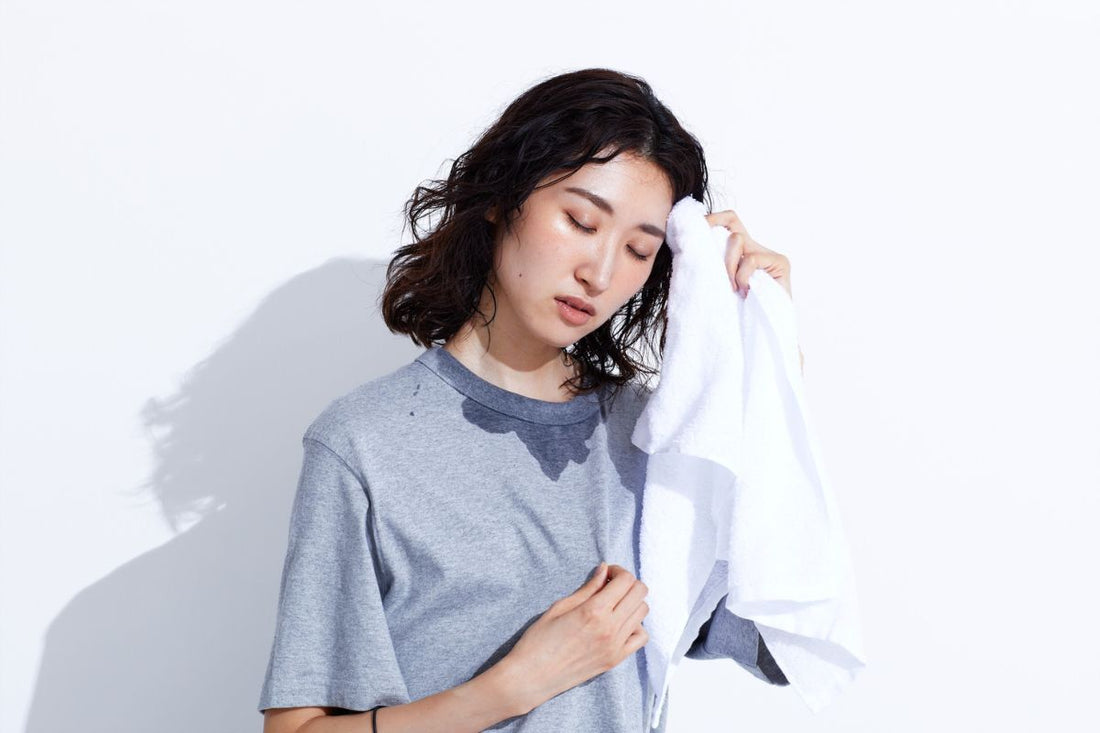Sweating is a natural bodily function that helps regulate temperature. However, excessive sweating—especially when it’s preventable—can be frustrating and uncomfortable. While many factors contribute to increased perspiration, one of the most overlooked causes is your clothing choices. The fabrics you wear, how they fit, and even their colors can directly affect how much you sweat throughout the day.
This article will discuss five common clothing mistakes that could make you sweat more. More importantly, we’ll provide practical solutions to help you stay cool, dry, and comfortable.
Choosing the Wrong Fabric

The type of fabric you wear plays a crucial role in moisture management. Some materials trap heat and moisture, leading to excessive sweating, while others allow for better ventilation and evaporation.
Fabrics That Make You Sweat More:
- Polyester and Nylon—While these synthetic fabrics are durable, they tend to trap heat and moisture close to the skin, making you sweat more.
- Acrylic & Rayon – These materials lack breathability, preventing proper airflow and moisture evaporation.
- Silk – Although lightweight, silk absorbs sweat and doesn’t dry quickly, leaving you feeling damp.
Fabrics That Keep You Cool:
- Cotton – A breathable, natural fiber that allows air circulation, helping to reduce heat buildup.
- Linen – Known for its lightweight texture and moisture-wicking capabilities.
- Moisture-Wicking Fabrics – Performance materials designed to pull sweat away from the skin, keeping you dry.
Solution:
Choose lightweight, breathable fabrics that promote air circulation and wick moisture away. For active situations, opt for moisture-wicking athletic wear; for everyday use, choose natural fibers like cotton or linen.
Wearing Tight or Heavy Layers
Your clothing’s fit and layering strategy can keep you cool or cause unnecessary overheating.
Why Tight or Heavy Clothing Increases Sweat:
- Restricted Airflow – Tight-fitting clothes don’t allow your body to regulate temperature efficiently.
- Increased Friction – More contact between fabric and skin can create additional heat.
- Layering with Thick Materials – Heavy layers trap heat, leading to overheating and excessive sweating.
Solution:
- Wear loose-fitting clothing that allows for better ventilation.
- Avoid layering excessively unless necessary. If layering is required, use lightweight, breathable fabrics.
- Opt for clothes with moisture-wicking properties to help regulate body temperature.
Ignoring Sweat-Prone Areas (Including Feet!)
 Most people focus on keeping their upper body cool but forget sweat-prone areas like their feet. Foot sweat, if not appropriately managed, can lead to discomfort, odor, and even bacterial infections.
Most people focus on keeping their upper body cool but forget sweat-prone areas like their feet. Foot sweat, if not appropriately managed, can lead to discomfort, odor, and even bacterial infections.
Why Footwear Choices Matter:
- Thick, synthetic socks trap moisture, leading to damp and overheated feet.
- Closed-toe shoes with poor ventilation increase sweating.
- Cotton socks absorb sweat but don’t dry quickly, making your feet feel damp all day.
The Solution: Odorless, Moisture-Wicking Socks
One of the most effective ways to keep your feet dry and odor-free is by wearing high-quality, moisture-wicking socks like Skunk Skin’s odorless ankle socks. These socks are designed to:
✅ Wick moisture away from the skin, keeping feet dry.
✅ Prevent odor buildup by using advanced antibacterial technology.
✅ Improve comfort and airflow, reducing heat retention inside shoes.
You can keep your feet cool and comfortable all day by choosing breathable footwear and ankle socks.
Choosing Dark Colors in Hot Weather
Color choice is often an afterthought when dressing for warm weather, but it significantly impacts body temperature.
Why Dark Colors Increase Sweat:
- Absorb More Heat – Dark colors, predominantly black, absorb and retain heat, raising your body temperature.
- Trap Body Heat – Less heat is reflected, making you feel hotter than you are.
Solution:
- Opt for lighter shades like white, beige, pastels, and light gray, which reflect heat rather than absorb it.
- If you must wear dark clothing, choose lightweight and breathable fabrics to offset heat absorption.
Opting for Non-Breathable Undergarments
 Undergarments sit closest to your skin, meaning their fabric and fit directly affect how much you sweat. Choosing the wrong material can trap moisture and increase discomfort.
Undergarments sit closest to your skin, meaning their fabric and fit directly affect how much you sweat. Choosing the wrong material can trap moisture and increase discomfort.
Common Mistakes with Undergarments:
❌ Wearing synthetic underwear that traps heat.
❌ Choosing thick, non-breathable bras or undershirts.
❌ Opting for tight-fitting undergarments that restrict airflow.
Solution:
✔ Choose moisture-wicking underwear made from bamboo, cotton, or specialized performance fabrics.
✔ Opt for seamless or mesh designs to promote better airflow.
✔ For activewear, invest in breathable sports bras and undershirts designed to regulate temperature.
Stay Cool and Sweat-Free
Excessive sweating is often the result of simple clothing mistakes that are easy to fix. You can significantly reduce discomfort and stay cool by choosing breathable fabrics, loose fits, lighter colors, and moisture-wicking materials.
One of the most overlooked areas is foot sweat, which can be managed effectively with Skunk Skin’s odorless ankle socks. These socks wick moisture away and help prevent odor, keeping your feet fresh throughout the day.
Making smarter clothing choices can enhance comfort, reduce excessive sweating, and increase confidence in daily activities. Stay calm, stay dry, and dress smarter!

